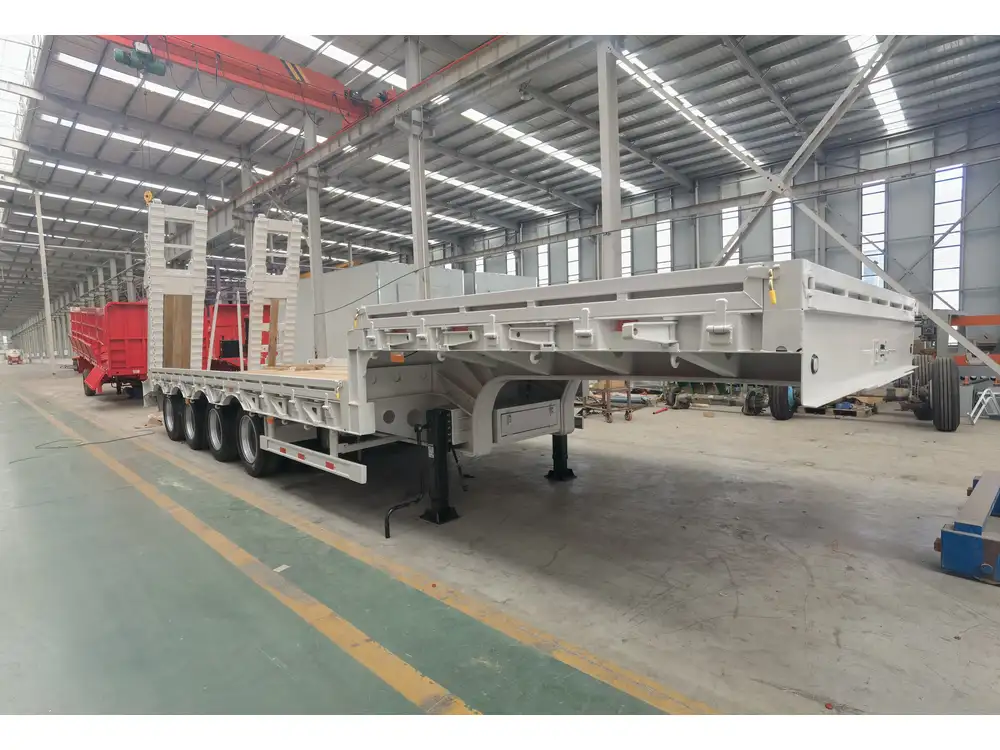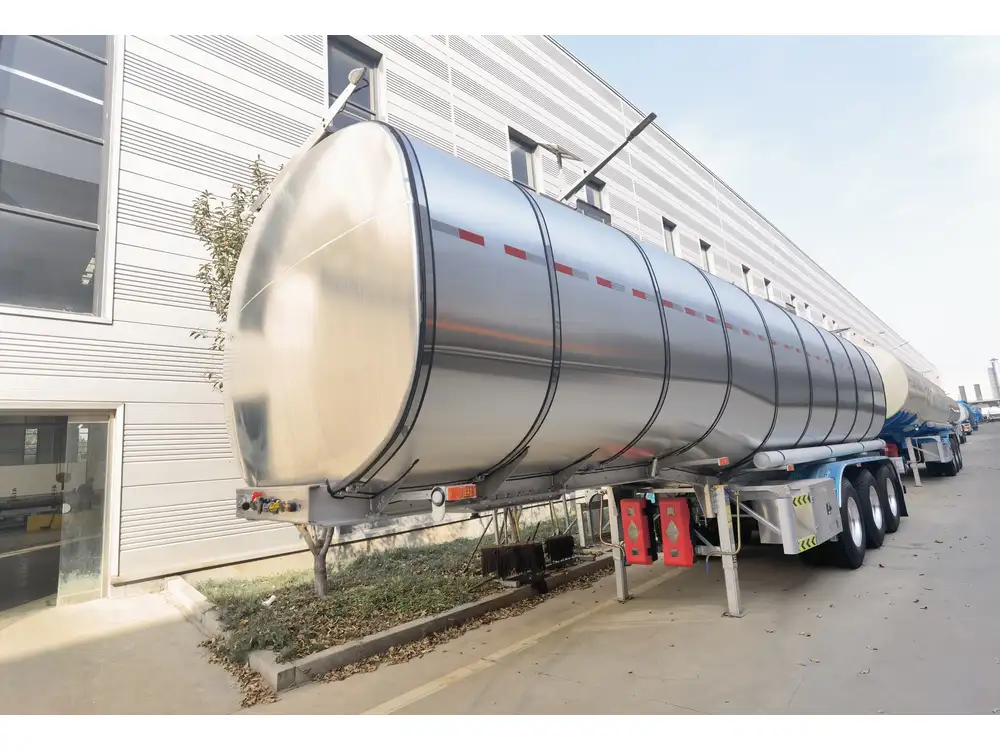When dealing with dump trailers, the ability to charge the trailer’s battery from your truck is essential, especially during long hauls or when using electric lift systems. In this comprehensive guide, we will explore various methods and considerations on how to effectively charge a dump trailer from the truck. With meticulous attention to detail, we aim to assist users in troubleshooting common issues, understanding the components involved, and ultimately ensuring smooth operation when on the road.
Understanding Dump Trailers and Their Power Requirements
What is a Dump Trailer?
A dump trailer is a specialized vehicle designed to transport bulk materials. It features a hydraulic lift system for unloading, allowing for efficient offloading of various materials such as dirt, gravel, and debris. Because of its operation, electrical systems are vital for powering the hydraulic lifts, which often raises questions about adequate power supply during transit.

Power Source: Battery and Charging Systems
Most modern dump trailers feature a 12-volt battery system dedicated to the hydraulic lift mechanism. Some considerations include:
- Battery Type: Lead Acid, AGM (Absorbent Glass Mat), and Lithium-Ion batteries have different needs and characteristics.
- Capacity: Measured in Ampere-hours (Ah), indicating how long a battery can supply a certain amount of current.
- Charging Systems: Single-stage, two-stage, or multi-stage chargers can maintain and condition the battery.
Charging Options for Dump Trailers
Direct Connection to Truck Battery
One of the simplest methods for charging a dump trailer from a truck is by establishing a direct electrical connection between the two vehicles.
Equipment Needed:
- Jumper cables or heavy-duty battery charging cables.
- Proper connectors to secure the connection.
Process:
- Step 1: Power Off Equipment. Before making any connections, ensure both the truck and trailer are turned off.
- Step 2: Connect Cables. Attach the positive (red) cable to the positive terminal of the truck’s battery, then connect the other end to the positive terminal of the dump trailer’s battery.
- Step 3: Ground Connection. Connect the negative (black) cable to the truck’s negative terminal and the other end to a grounding point on the dump trailer (or its negative terminal if accessible).
- Step 4: Start Truck. Turn on the truck, allowing it to charge the trailer’s battery.
- Step 5: Monitor Charging. Keep an eye on the time; usually, a few hours should be sufficient.

Utilizing a Dedicated Dump Trailer Charging System
Investing in a dedicated charging system for your dump trailer can yield several benefits:
Onboard Charger: Many dump trailers now come equipped with onboard chargers. This system often includes smart charging features, optimizing battery health over time.
Automatic Charging: This system can automatically switch between truck battery power and trailer battery power, ensuring optimal operation with minimal user intervention.
Solar Charging: For operators frequently using dump trailers in remote areas:
- Solar Panels can be mounted on the trailer.
- Charge Controllers ensure battery safety by regulating voltage and preventing overcharging.
Utilizing a 7-Pin Connector
The 7-pin trailer connector standard provides an efficient way to interface electrical systems between the towing vehicle and the trailer.
Connector Wires:
- Each pin corresponds to a different function. The auxiliary power pin specifically can be utilized for charging purposes.
Wiring Setup:
- Ensure that the truck is equipped with a functional 7-pin connector. Check compatibility with the dump trailer’s connector.
Connection Process:
- When connected, the truck’s battery will supply power to the trailer’s battery, charging it during transit.
Considerations for Charging
Cable Gauge: The thickness of the cables affects the amount of current that can efficiently flow, with heavier gauge cables typically having lower resistance. A 6 or 8-gauge cable is recommended for optimal performance.
Charging Duration: Charging times can vary based on the battery’s state of charge, the power output of the truck, and cable efficiency. Regularly monitor battery voltage with a multimeter.
Preventing Battery Drain: To avoid excessive battery drain on the truck, utilize a dual battery system in the towing vehicle or ensure that the truck is sufficiently powered.

Troubleshooting Common Charging Issues
No Power Output:
- Check connections to ensure they are secure.
- Inspect wiring for any signs of wear or damage.
Slow Charging:
- Ensure that the truck’s engine is running at higher RPMs to provide optimal electrical output.
- Verify and replace any aged or damaged charging cables.
Inconsistent Power Supply:
- Consider upgrading to a heavier-duty connector or assessing the vehicle’s alternator capacity.
Safety Tips When Charging Dump Trailers
Always Wear Protective Gear: Gloves and safety goggles should be standard when handling batteries.
Disconnect Before Working: Always disconnect batteries before performing any maintenance or repairs to reduce the risk of electrical shock.
Regular Maintenance: Monthly checks on battery terminals, fluid levels, and electrical connections help prevent future issues.
Monitor Battery Health: Using a battery tester can help keep track of battery health and identify problems before they occur.
Respect Voltage Ratings: Ensure that the voltage ratings of the charger and batteries match to prevent damaging the electrical system.
Conclusion
Understanding how to charge a dump trailer from your truck is crucial for any operator involved in transporting bulk materials. Whether through a direct connection, using a specialized charging system, or leveraging a 7-pin connector, it is imperative to ensure optimal operations without interruptions.
In summary:
| Method | Suitable For | Key Considerations |
|---|---|---|
| Direct Connection | Quick and straightforward charging | Ensure secure connections and correct equipment |
| Dedicated Charging System | Frequent users of dump trailers | Offers convenience and optimal battery health |
| 7-Pin Connector | Standard trailer setups | Check compatibility and ensure proper connections |
| Solar Charging | Operators in remote locations | Requires panels and appropriate charging controllers |
By providing users with detailed insights and considerations about charging mechanisms, we can empower operators to maintain and operate their dump trailers efficiently. Understanding these nuances not only leads to fewer disruptions but also a longer lifespan for both the truck and the trailer.



